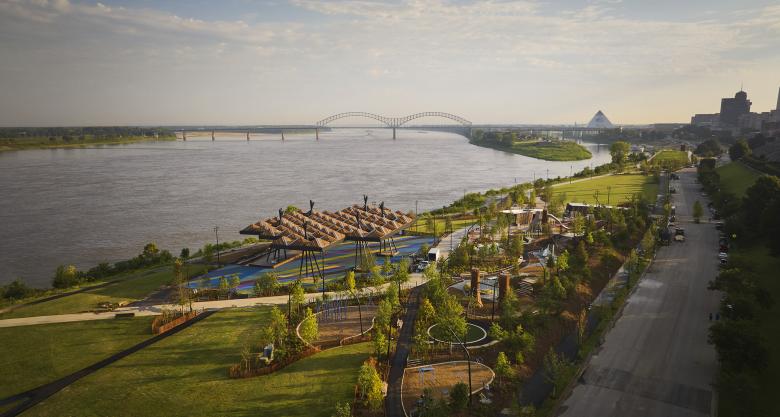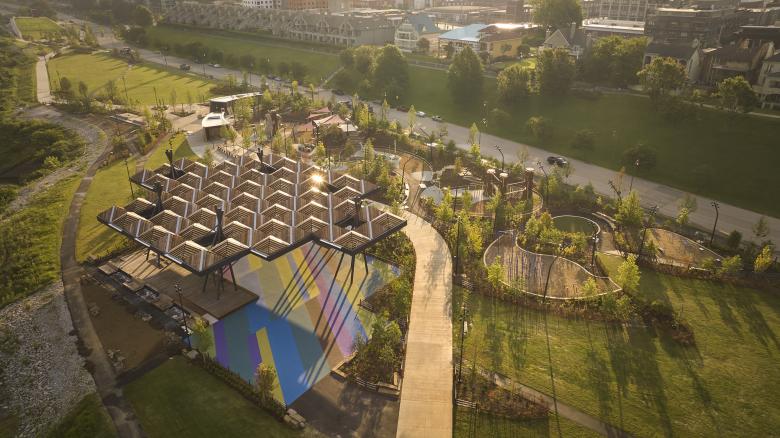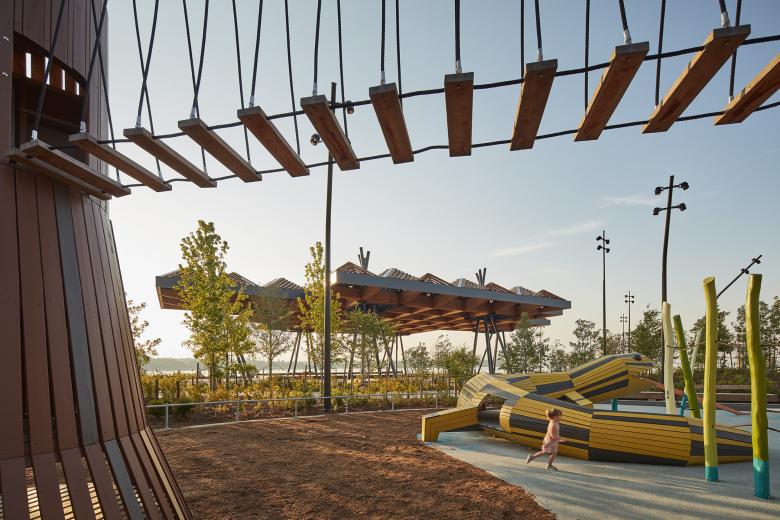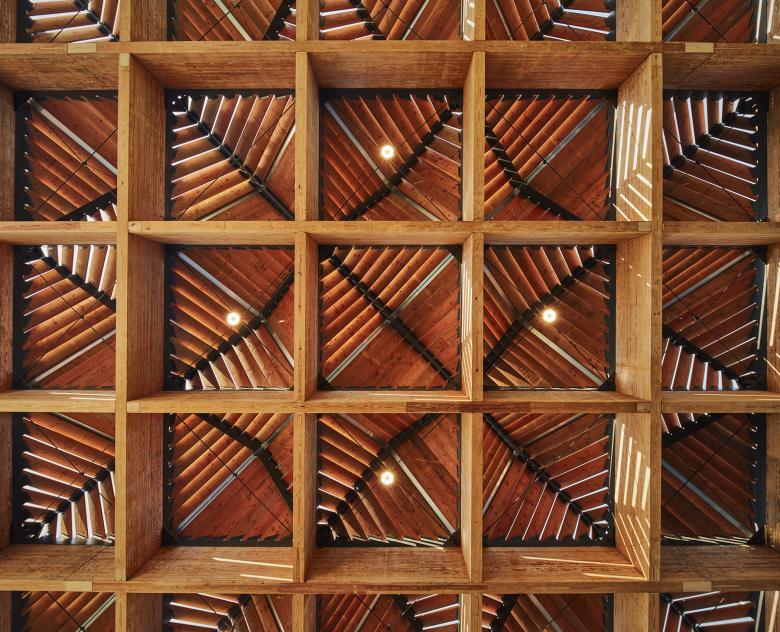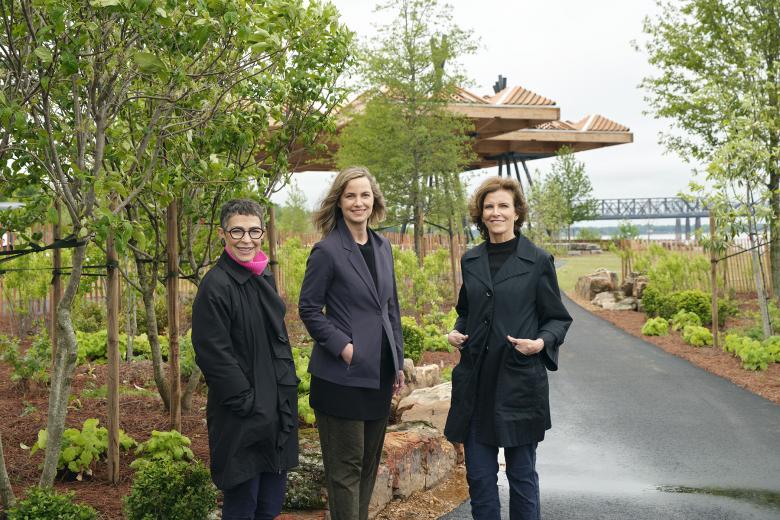4. de setembre 2023
Photo © Tom Harris
Tom Lee Park, a 31-acre green space along the Mississippi River in Memphis, Tennessee, opened to the public on September 2, 2023, following a major overhaul by Studio Gang and SCAPE.
Created in the 1930s at the base of Beale Street and renamed Tom Lee Park in 1954, Memphis's riverfront park was expanded to its current, nearly one-mile-long footprint by the U.S. Army Corps of Engineers in the early 1990s. Even with its prominent setting and long history, the park was considered “an unremarkable swath of turf” and at one point was even used as a city dump; this according to the Memphis River Parks Partnership, which was created to guide the reimagining of Tom Lee Park and other public spaces along the Mississippi.
With its experience designing buildings along the Chicago River, among other water-based projects, Jeanne Gang and her Chicago studio were hired by the partnership to develop the Memphis Riverfront Concept for six miles of the city's Mississippi riverfront. Tom Lee Park was just one of five “zones” in the plan Studio Gang delivered in 2017. The concept's overarching principles were to foster civic pride and identity in the majority Black city, restore natural conditions and native ecologies along the river, and better connect the green spaces to the city.
Photo © Tom Harris
Astor Park was renamed in honor of Tom Lee in 1954, two years after his death. Lee was a levee worker and Memphis resident who happened to be steering his skiff up the Mississippi on May 8, 1925, when the M.E. Norman steamboat capsized. Although he could not swim, Lee managed to rescue 32 people in the rapid current (just 23 people among the 72 on board died) and was immediately hailed as a hero. A statue depicting Lee's efforts was unveiled in the park in 2006, when a city council member declared that “the city rallied around a Black man for the first time in history.”
That the park is named for a Black man who selflessly put his life in jeopardy to save others, rather than as it was for businessman John Jacob Astor, is certainly important in terms of Memphis's identity. So was the removal of two Confederate statues from its downtown parks in 2017, the same year of the Memphis Riverfront Concept. Those parks were transformed as part of the partnership's plan into River Garden and Fourth Blu Park. Respectively completed in 2018 and 2019, they were precursors to the reimagined Tom Lee Park, which features contributions by Chicago artist Theaster Gates and Memphis native James Little that further the plan's goal of fostering civic pride and identity.
Photo © Tom Harris
In addition to its role in master planning the park, Studio Gang was responsible for the park's architectural elements. Most prominent among them is Sunset Canopy, a timber structure whose pyramidal roof forms echo the famous Memphis Pyramid that was built in 1991 and is visible in the distance in the photos at top. The steel-supported wood structure shades a colorful basketball court, one of numerous activity-based elements that are spaced out within the linear park, located at pedestrian nodes that connect to smaller parks and to the city east of four-lane Riverside Drive.
Upon the opening of Tom Lee Park over the long Labor Day Weekend, Sunset Canopy was dedicated to Tyre D. Nichols, the 29-year-old Black man who was killed by Memphis police officers in January 2023. Nichols worked for FedEx, but he was also an amateur photographer who loved to capture sunsets on the river. Lest visitors are unable to make the connection, permanent signage will mark the dedication and remembrance of Nichols, much like the park remembers Lee.
Photo © Tom Harris
The Sunset Canopy sits within a landscape that SCAPE, the landscape studio directed by Kate Orff, describes as “a series of programmatic zones that mimic the dynamic hydrology and sediment flows of the Mississippi River.” SCAPE's landscape design was inspired by the mighty river's “riffles, pools, micro-deltas, and tailouts,” and it all sits upon “a restored soil system [that] supports over a thousand new trees and lush native plantings.” By echoing the river landscape, SCAPE's design makes the experiences of visiting the park one of being within nature, something that should be strengthened over time as the new trees and plantings bloom and grow.
